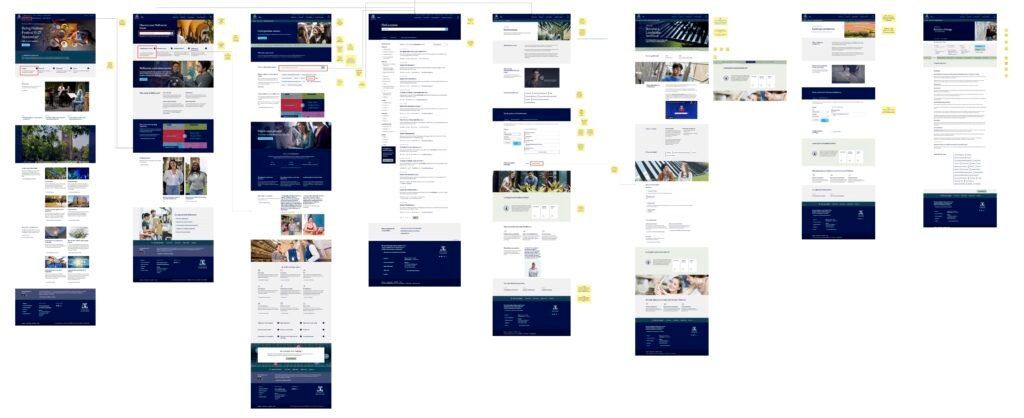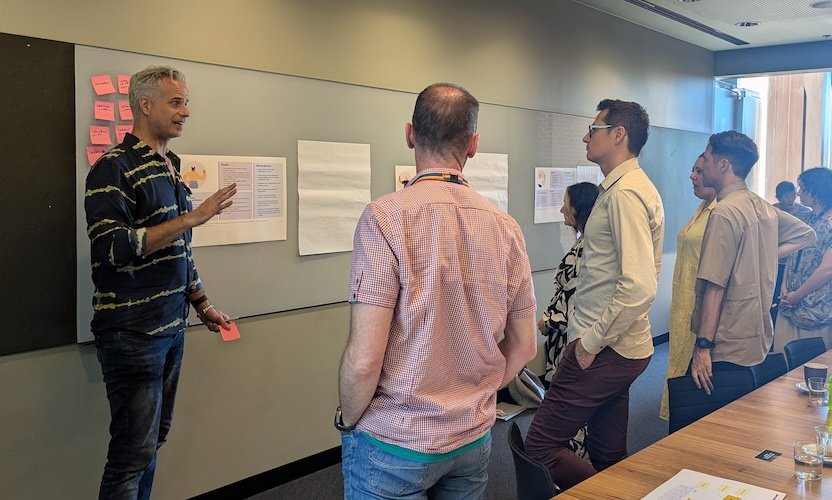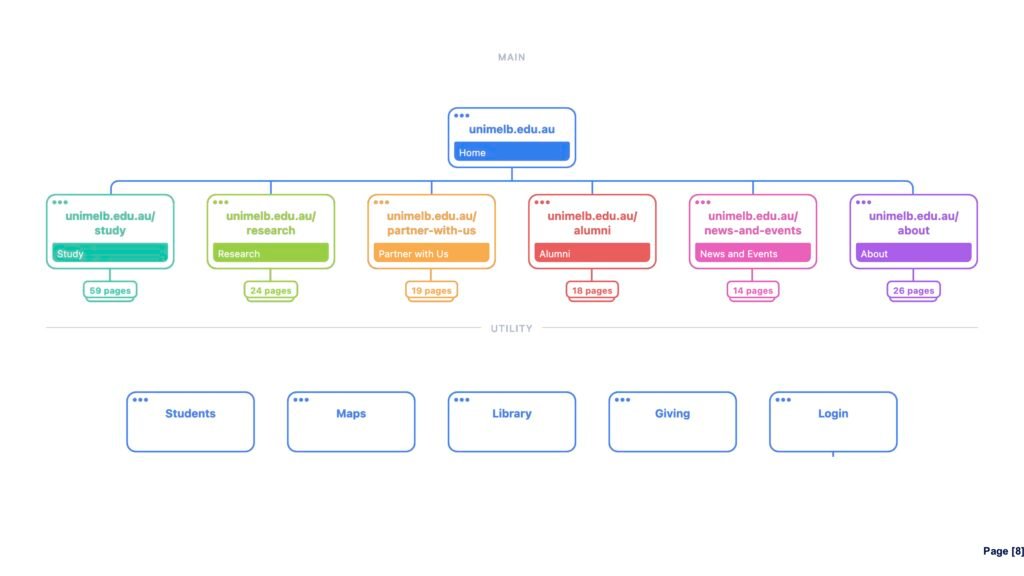Project Overview
The University of Melbourne’s website is massive — one of the largest digital estates in the Australian higher education sector. Over time it had become fragmented, with countless subdomains, inconsistent navigation, and duplicated content.
I worked with the University’s central Navigation & Information Architecture Team (UNIT) to rethink how users move through the site. The goal: a world-class digital experience that makes it easy for students, researchers, partners, and alumni to find what they need.
The Challenge
Across all user groups we heard the same feedback:
-
“Too many websites. So many different links and places to access info.” – Graduate Researcher
-
“Simplify things. Have everything in one place, clear, simple, and well-communicated.” – Commencing Student
Some of the key issues:
-
Inconsistent navigation: Different faculties had different menus and pathways.
-
Content duplication: The same information appeared in multiple places, often out of sync.
-
Jargon & unclear labels: Terms like “Graduate” vs “Postgraduate” confused users.
-
Subdomain sprawl: study.unimelb.edu.au, research portals, and faculty microsites created a disconnected experience.
My Role
-
UX Lead — guiding the IA strategy, research, and design approach.
-
Facilitator — running co-design workshops with stakeholders across faculties, services, and communications.
-
UI Lead — overseeing how IA concepts translated into usable wireframes and prototypes.
This combination meant I could bridge strategy, facilitation, and hands-on design — keeping the work consistent from discovery through to design.
Our Approach
We followed a structured, collaborative process:
-
Discovery — workshops, stakeholder interviews, and competitor reviews to uncover pain points.
-
Content audit — mapping duplication and identifying priority content areas.
-
Tree testing — measuring success rates for common user tasks in the current IA vs. new concepts.
-
Co-design workshops — bringing faculty and central stakeholders together to create IA concepts with cards and journey mapping.
-
Wireframes & usability testing — prototyping navigation options and testing them with real users.



The Solution
Through iteration and testing, we landed on a navigation and IA framework that:
-
Simplifies top-level navigation with clear sections: Study, About, Alumni, News & Events.
-
Separates “Research” and “Partner with Us” — giving researchers and industry partners distinct entry points.
-
Recommends migrating subdomains into subdirectories (e.g. unimelb.edu.au/study instead of study.unimelb.edu.au) to unify the experience.
-
Introduces governance and content strategy to reduce duplication and keep content accurate over time.
Early Outcomes
Even at this stage, validation testing showed significant improvement:
-
Tree test success rates jumped from 31% in the current IA to 71% in the new concepts.
-
Stakeholders reported stronger alignment between navigation and their strategic goals (research impact, student recruitment, alumni engagement).
-
The project created a clear roadmap for future initiatives, including advanced search, personalisation, and dynamic hubs for research and events.
Future Opportunities
This project laid the foundation for bigger digital transformation:
-
Unified course product catalogue — a single source of truth for study information.
-
Dynamic research hub — consolidating researchers, projects, and publications in one place.
-
Personalised student experience — tailoring navigation and content to individual needs.
-
Improved events discovery — with a centralised platform and tagging system.
Reflection
For me, this project was about more than restructuring menus. It was about aligning a complex institution around the idea of clarity, simplicity, and user-centred design.
By combining facilitation, strategy, and design leadership, I helped create a navigation and IA framework that sets the University up for long-term success — a digital foundation worthy of its global reputation.
(Closing visual: A clean UI mock-up of the proposed navigation or a brand-aligned concept image of “digital transformation at UniMelb.”)

